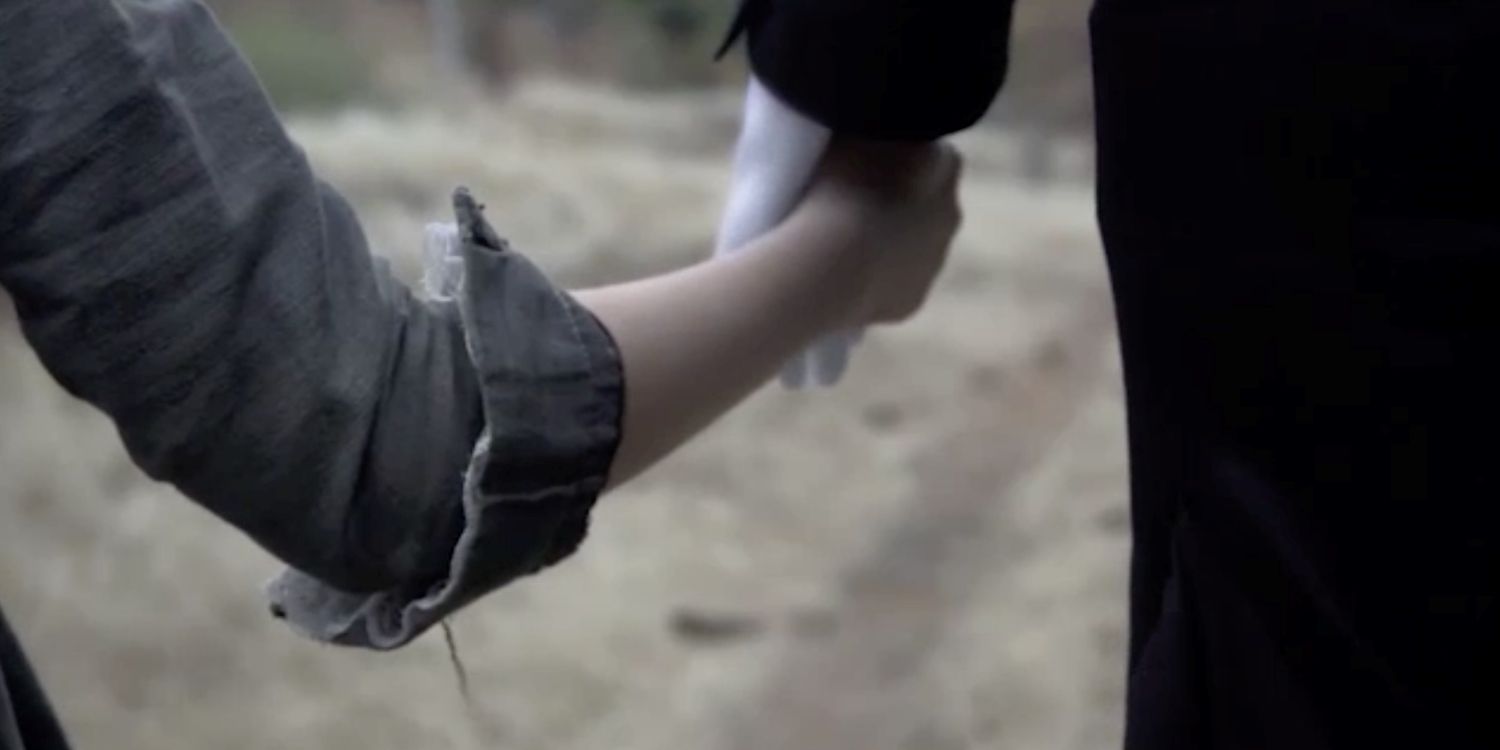Serial, The Jinx, and Making a Murderer, gave true crime a high-profile boost that unfolded in rapid succession, giving the genre new prominence in a relatively short amount of time. A little more than a year after Netflix’s petition-inspiring, award-winning effort, the HBO’s Beware The Slenderman follows in the footsteps of those documentaries and investigations, and brings with it a surprisingly effective secondary component, examining the impact of urban myths and the role one played in the attempted murder of a schoolgirl by two of her classmates.
It was the sort of shocking story just waiting to be sensationalized: A pair of 12-year-old Wisconsin girls lured a friend into the woods and stabbed her 19 times in an attempt to satisfy the mythical figure known as Slenderman. Left for dead, the victim, Payton “Bella” Leutner, survived the attack, and the two girls, Morgan Geyser and Anissa Weier, were later apprehended, wandering off in search of Slederman’s mansion, where they believed they would become “proxies” of the urban legend. The case quickly spread through the media, as details of the assault and its motives were made clear. The notion that two young girls would partake in such a crime was difficult enough to understand, but the added component of a relatively new urban legend acting as the instigating factor altered the public’s perception of the case from the start.
In unpacking the details of the case, director Irene Taylor Brodsky threads a line between the more sensational aspects lying on the surface and the psychology behind the viral nature of certain urban myths and internet memes. In doing so, Beware the Slenderman is pulled in two directions at once, following the true-crime breadcrumbs as far as the case has moved in the time since the attempted murder occurred (spoiler: not far) and working to understand the origins of Slenderman, the character’s popularity, and how two young girls could be convinced it was real. It is daunting task, but Brodsky manages to connect the two threads through interviews with the girls’ parents and through a discussion with experts on the role a cultural artifact like Slenderman plays in society and especially childhood development.

The true crime aspects and the investigation into the popularity of Slenderman or other pieces of viral internet lore underline the way in which the unique aspect of the crime is a product of the digital age. Brodsky explores the growth of Slenderman, tracing his origins back to a meme on the Creepypasta website, and then follows a handful of the threads that branch off from there. Although the character’s creation can be linked back to a single source, a cottage industry of memes, viral videos, artwork, and video games, suggest the character has since become fully appropriated by the internet itself. In a way, the ubiquitous nature of the character and the nebulous sense of authorship has helped fuel his popularity, but it has also cemented his status as something more than a meme or myth for some like Geyser and Weier.
To that end, Brodsky works to uncover the ways in which the still developing, adolescent minds of Geyser and Weier could find themselves susceptible enough to such a figure and the fears associated with the legend they would perceive him as a legitimate concern. Brodsky reveals some answers through in-depth interviews with family members and those familiar with the evolution of viral elements like Slenderman. But she also discovers what roles social isolation and mental illness played in the crime at hand. Brodsky’s access to the families of the accused affords the film a necessary human element. Conducted primarily with Geyser’s mother Angie and Weier’s father William, the interviews unfold patiently and intimately. Geyser’s account of her child’s upbringing and the little ways in which she was different tie into the eventual revelation that she has since been diagnosed with schizophrenia, a condition shared by her father.

That distinction plays an important role in how the facts play out. Brodsky has obtained footage of the girls’ interrogations, and in conjunction with a perhaps too-liberal use of clips featuring the faceless boogeyman (from the vast stores readily available on the internet), uses it to paint a fuller picture of the mindset that led to the crime of which they both stand accused. As the police detectives struggle to make sense of Geyser and Weier’s accounts, the question of each girls reason is seemingly discovered yet remains vexing nonetheless.
Perhaps because of this, Brodsky explores the nature of viral content (memes, videos, fan art, etc.) through a series of interviews with members of the online community, literary critics, experts in psychology, and with evolutionary biologist Richard Dawkins. The interviews often serve to highlight technology’s role in the dissemination of information – both fact and fiction – and how impressionable minds can be influenced and oftentimes overwhelmed by the massive influx of material coming at them. At one point Dawkins refers to memes as “a virus of the mind,” one that the brain picks up and spreads from one person to another. Applicable as it is to the case at hand, this point seems particularly salient given recent events.
Despite the level of engagement afforded Beware the Slenderman by its access to the Geyser and Weier families, and footage of not only the interrogations but also courtroom proceedings, in which it becomes apparent just how long the girls have been incarcerated, there is a sense that the film was made too soon. Much of that is due to what little progress has been made in the pending criminal trial, as the majority of the film unfolds while a decision as to whether or not the girls will be charged as adults or juveniles is reached. While it’s understandable that Brodsky would want to jump on the subject as soon as possible, the lack of resolution in that one area leaves the film feeling haunting but unfinished.
Next: Making A Murderer: One Year Later
Beware the Slenderman is available to stream on HBO Go and HBO Now.




